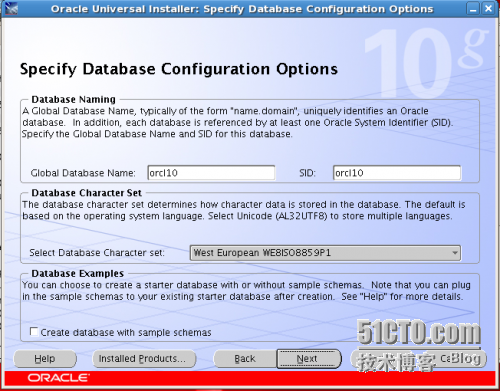
- 10201 DATABASE LINUX X86 64.CPIO.GZ INSTALL
- 10201 DATABASE LINUX X86 64.CPIO.GZ PATCH
- 10201 DATABASE LINUX X86 64.CPIO.GZ SOFTWARE
Mkdir -p /u01/app/oracle/product/10.2.0/clusterwareĬreate the environment variables for the oracle user.Įxport ORACLE_HOME=$ORACLE_BASE/product/10.2.0/db1

Make sure you have your SElinux disabled by lookin the the file: /etc/sysconfig/selinuxĬreate and required directories and set the permissions. I will use Putty for the next steps but you can keep on using the terminal inside your Linux box. After the system boots up, login with the root user to keep making changes. Reboot you system to let the virtual box guest additions do its magic. Save the changes and activate each interface with the activate icon. This one is going to be the interconnect or private interface.įrom the screen that you can select the interfaces, go to the DNS tab and type the hostname of the node and your DNS. Now, do the same thing with the interface eth1. Select the interface eth0 and click edit to make the required modifications for our public interface.
10201 DATABASE LINUX X86 64.CPIO.GZ INSTALL
We have to make some modifications in the system in order to install the oracle clusterware.įirst, let’s edit our network interfaces. Now that we have our operating system installed, login as the root. PART IV – Pre installation tasks for Oracle Clusterware At this point the operating system is installed.

You will be prompted to reboot the system, proceed and wait until the system to reboot. We do not have additional cds, continue clicking forward The oracle-validated package that we selected before created the oracle user that we will use. If you want to create additional users you can do it at this time or later if you prefer. Where the system is up a ready, click next to continue. Once it’s done, click reboot to continue. Next, select the oracle-validaded package from the menu In this section select customize now to select additional packages that you may like. On the network session, just leave everything as it is and continue Next, select yes to erase all the data in the disks.Ĭlick on yeas to remove all partitions and create the defaults When the anaconda installer is up and ready, just click next to begin. Once the VM boots up, press enter to begin the installationĪfter some time you will be prompted to scan for errors in the installation media, just skip it. Start up your virtual machine(VM) and select your installation media as follows. PART III – Installing the operating system. You will need at least two network interfaces per nodes and in briged mode.Īt this point you have successfully created your first node called oralab1. Once the Virtual Machine is created, go to settings and edit the network adapters. Select the size and name for your hard drive. Now select you your virtual disk will be stored in the host machine. Just follow the screens as explanations below.Ĭlick on create a new virtual machine type in the name as shown Once you have downloaded all the required software, proceed creating the first virtual machine. PART II – Creating the first node (oralab1b).
10201 DATABASE LINUX X86 64.CPIO.GZ SOFTWARE
Installing Oracle database software and asm.ĭownload the software from the links below.

10201 DATABASE LINUX X86 64.CPIO.GZ PATCH
This installation guide should work for the other 10g patch sets. The software versions that i’m going to use are the 10.2.0.1.The host machine should have at least 8GB of RAM to support the two nodes in the configuration.


 0 kommentar(er)
0 kommentar(er)
